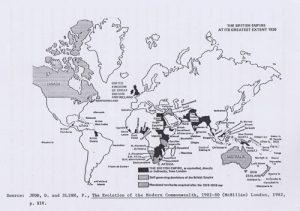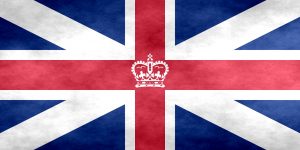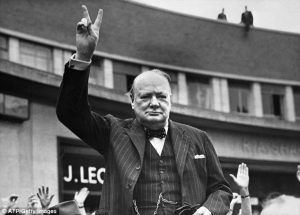The British Imperial Expansion
It cannot be said that the pride of the British was unjustified. Apart from the mighty Empire whose structure we shall study in due course in this chapter, the British were creators too. Having escaped the social convulsions that shook the rest of Europe, they provided a model of liberal but traditional stability. Their original mastery of steam, and all that came from it, had given them a technological start over all other nations, an advantage they put to imperial uses. In addition, the flexibility of their unwritten constitution was handy for an expansionist state. The British as islanders knew more about the world than most of the other continental nations, because they had more ships than all other nations put together, and there were very few British families who had not sent a man abroad for either sailing a vessel or fighting a war or to settle altogether. Furthermore, over many years they had created an imperial elite to whom Empire was a true vacation. These rulers were products of the institutions that were defined in chapter one, notably the public schools. These schools taught a man to be disciplined, uncomplaining and reserved. Generally the boys had an early experienced of command. The members of the imperial ruling-class “stood to gain directly from the existence of Empire, in jobs, in dividends, and so forth.”7
These accomplishments and pride had evolved over many years but it was in the nineteenth century that this evolution seemed to develop most and reach its high point. Towards the end of the century, however, France and Germany were seen as the potential threats to the British interest. Therefore, Chamberlain saw it appropriate to officially advocate a policy that both protected British interests and continued to hold the doors open for acquiring new markets to meet the needs of home developments.
“Between the 1880s and 1930s British imperial power stood at its pinnacle. During the decades leading up to the 1914-18 war the size of the Empire continued to grow as new territories were added, generally with startling ease, all around the globe. The treaties arranging the peace following that war brought the Empire to its greatest extent, as various mandated territories formerly belonging to the defeated states were entrusted to Britain’s care.”8
The British Empire covered over a quarter of the world’s land surface and contained a quarter of mankind. The British flag flew in every climate and on every continent. The human and material resources of the Empire surpassed those of Ancient Rome or sixteenth century Spain, just as they dwarfed those of the contemporary French, Dutch, or German Empires.
One can say that in some respects the Empire was not British at all. Barely 12% of its people were European, let alone British. Its most commonly practiced religions were Hinduism and Islam, not Christianity. British administration had hardly penetrated the hinterlands of some of the more recently acquired colonies in Africa or the Pacific. “Yet the British were in the process of stamping a clear, although sometimes light, mark on this vast conglomeration of territories and people.”9 The British provided the administrative personnel and much of the investment, just as they dominated the Empire’s trade. The component parts of the Empire were linked together by the English language, English legal and constitutional procedures, English educational standards and British monarch. The full weight of Britain’s diplomatic resources could be put at the Empire’s service. The Royal Navy, which had helped to create and had grown with the Empire, patrolled the high seas. Apart from diversity in the human and geographical characteristics in the Empire, there were diversities in the way of running the Empire as there had been in its acquisition. It could be said that the Empire fell into three categories.



